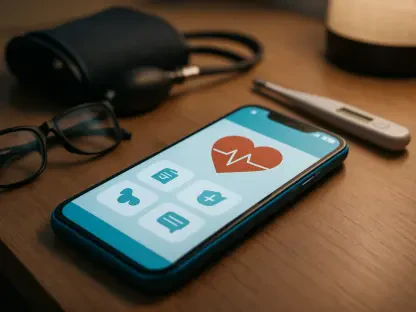Imagine a world where a smartwatch does more than just count steps or monitor heart rate, but instead narrates the story of a user’s day with uncanny precision, distinguishing between a stressful meeting and an intense workout. This vision is becoming reality with a groundbreaking AI innovation that redefines how wearable devices interpret health data. Designed to bridge the gap between raw numbers and meaningful context, this technology promises to turn metrics into actionable insights. By understanding the nuances of daily activities, it offers a glimpse into a future where personal health technology feels less like a gadget and more like a trusted companion. The implications are vast, touching everything from fitness tracking to clinical monitoring, and setting a new standard for digital wellness.
Revolutionizing Data Interpretation
Bridging the Gap Between Metrics and Meaning
One of the most significant challenges in wearable technology has been the lack of context behind the data collected. A heart rate reading of 150 beats per minute might signal vigorous exercise, or it could point to heightened anxiety, yet traditional devices often leave users guessing. This new AI model tackles that ambiguity head-on by learning to interpret sensor inputs as a form of language. Trained on an expansive dataset comprising millions of hours of anonymized readings from thousands of individuals, the system deciphers patterns that correlate with specific activities. It moves beyond mere numbers to provide descriptions that resonate with real-world experiences, such as identifying a brisk morning jog versus a leisurely evening stroll. This capability marks a departure from static metrics, enabling a richer understanding of physical states. As a result, users gain insights that are not just data points but narratives of their daily lives, fostering a deeper connection to their health journey.
Crafting Narratives from Raw Inputs
Beyond simple classification, the AI’s ability to generate detailed summaries of a user’s day sets it apart from existing technologies. Imagine a wearable device that can recount a sequence of events, pinpointing an outdoor bike ride in the morning, a short walk after lunch, and even periods of restful sleep with minute-by-minute accuracy. This is achieved through advanced training methods that allow the system to describe complex sensor data in human-readable language. Such precision stems from a dual approach of contrastive learning, which sharpens the model’s ability to differentiate between similar activities, and generative techniques that build coherent explanations. Tested in scenarios where it had no prior specific training, the technology still demonstrated remarkable accuracy in identifying a wide range of activities. This suggests a robust framework capable of adapting to diverse user behaviors, paving the way for more intuitive health tools that communicate in ways that feel natural and accessible.
Shaping the Future of Personalized Health Tech
Advancing Toward Conversational Wellness Tools
The trajectory of wearable technology is shifting toward a more personalized and conversational approach, and this AI innovation is at the forefront of that change. As the model scales with larger datasets and more sophisticated architectures, its performance continues to improve, hinting at a time when devices could serve as digital health coaches. Picture a smartwatch that doesn’t just alert a user to an elevated heart rate but offers tailored suggestions, perhaps recommending a brief meditation session if stress is detected. This move beyond raw data to actionable dialogue represents a significant leap in how health insights are delivered. The potential extends to clinical settings as well, where such tools could assist in monitoring patients with chronic conditions by providing detailed reports to healthcare providers. This evolution underscores a broader trend in technology: the drive to create systems that not only track but truly understand and respond to human needs with empathy and precision.
Unlocking Potential for Tailored Health Insights
Looking back, the development of this AI marked a turning point in how wearable devices interacted with users, transforming isolated metrics into cohesive stories about physical well-being. Its ability to classify activities with high accuracy and summarize events in detail demonstrated a profound shift in digital health capabilities. By leveraging vast amounts of sensor data and innovative training methods, the system achieved a level of insight previously unattainable, setting a benchmark for future advancements. As attention now turns to scaling these capabilities, the focus remains on integrating such technology into everyday wearables to offer even more personalized advice. Exploring partnerships with health organizations and refining the conversational aspects of these tools could further enhance their impact. Ultimately, the journey of this innovation highlighted a clear path forward: creating devices that not only monitor but also empower users with clarity and actionable guidance for better wellness.









